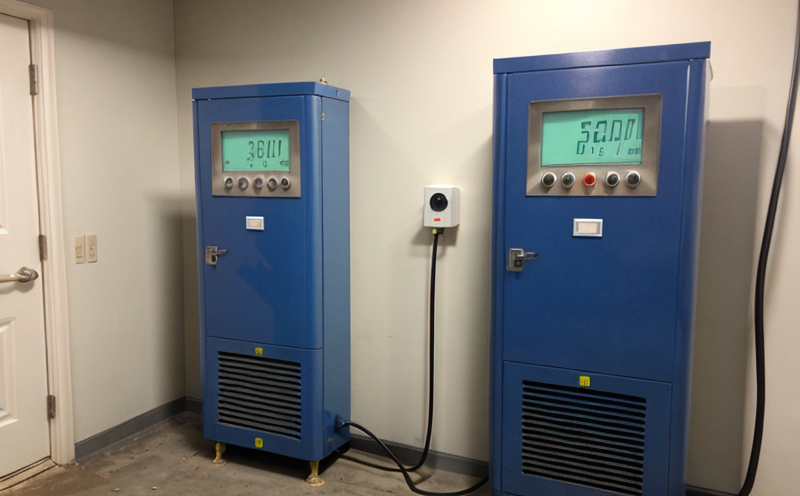MSHA Ventilation System Compliance Testing
The Mine Safety and Health Administration (MSHA) sets stringent standards to ensure the safety of miners by mitigating hazards associated with mine ventilation systems. These regulations are critical for maintaining a safe working environment that minimizes exposure to harmful gases, particulates, and other atmospheric contaminants.
Our MSHA Ventilation System Compliance Testing service ensures compliance with these regulations through rigorous testing procedures. Our team utilizes state-of-the-art equipment and adheres strictly to industry standards such as MSHA. This service is essential for quality managers, compliance officers, R&D engineers, and procurement professionals who are responsible for ensuring the safety of mine operations.
Compliance testing involves several key aspects including, but not limited to, air flow measurement, gas detection accuracy, particulate matter analysis, and overall system integrity. These tests are performed under controlled conditions that simulate real-world scenarios to ensure accurate results. Our laboratory has experience in handling a variety of mine ventilation systems, from small-scale operations to large industrial facilities.
Our testing process begins with thorough inspection and documentation of the existing ventilation system. This includes assessing the current state of the system, identifying any potential issues, and ensuring all components are functioning as intended. Specimen preparation is crucial in this phase, requiring precise sampling techniques to ensure accurate analysis. Once prepared, samples undergo a series of tests using advanced instruments calibrated according to MSHA guidelines.
The testing process typically involves multiple steps designed to evaluate different aspects of the ventilation system. For instance, air flow measurements are taken at various points within the mine to determine if there is adequate airflow throughout all areas. Gas detection accuracy checks ensure that sensors used for monitoring hazardous gases function correctly and provide reliable data. Particulate matter analysis assesses the level of dust or other particulates present in the air, which can impact both respiratory health and equipment longevity.
Once testing is complete, detailed reports are generated summarizing findings and providing recommendations for any necessary improvements. These reports serve as valuable tools for mine operators to identify areas needing attention and implement corrective actions promptly. Compliance with MSHA regulations not only enhances safety but also helps avoid costly fines and penalties associated with non-compliance.
Why It Matters
The importance of MSHA Ventilation System Compliance Testing cannot be overstated. Ensuring proper ventilation in mines is crucial for protecting the health and safety of miners, preventing accidents, and reducing risks associated with exposure to harmful substances.
Inadequate ventilation can lead to accumulation of toxic gases such as carbon monoxide (CO), methane (CH4), or hydrogen sulfide (H2S). These gases pose significant threats to human life if not properly managed. Properly designed and maintained ventilation systems help dilute these pollutants, ensuring that miners breathe clean air.
Additionally, effective ventilation plays a key role in maintaining optimal working conditions within mines. By controlling temperature and humidity levels, it improves overall comfort for workers while also extending the lifespan of equipment by reducing wear and tear caused by extreme environmental factors.
Compliance with MSHA regulations ensures that all aspects of mine ventilation are regularly assessed and updated as needed. This continuous monitoring helps identify potential hazards early on, allowing for prompt intervention before they escalate into serious incidents. It also demonstrates a commitment to worker safety and regulatory adherence – key considerations when it comes to maintaining good standing within the industry.
Failure to comply with MSHA standards can have severe consequences ranging from fines and penalties imposed by regulators to increased insurance costs due to higher perceived risk levels. By investing in comprehensive ventilation system compliance testing, mines demonstrate their dedication to safety and environmental responsibility, which can significantly enhance public image and attract more investment opportunities.
Benefits
- Ensures strict adherence to MSHA regulations, safeguarding miner health and safety.
- Promotes optimal working conditions by controlling temperature, humidity, and air quality within mines.
- Reduces risks associated with exposure to harmful gases and particulates, minimizing potential accidents.
- Extends the lifespan of equipment through proper ventilation that minimizes wear and tear from environmental factors.
- Avoids costly fines and penalties by preventing non-compliance issues before they escalate into serious incidents.
- Demonstrates a commitment to worker safety and regulatory adherence, enhancing public image and attracting more investment opportunities.
Industry Applications
| Application | Description |
|---|---|
| Coal Mining | Testing ventilation systems in coal mines to ensure safe working environments and compliance with MSHA regulations. |
| Metal & Non-Metal Mines | Evaluating ventilation effectiveness for metals like gold, silver, copper among others as well as non-metal minerals such as limestone or salt. |
| Underground Mining Operations | Assessing ventilation systems specifically designed for underground mining environments where space constraints and specific geologies require specialized solutions. |
| Pit Mines | Analysing ventilation in open pit mines to ensure that workers are protected from hazardous conditions such as dust, gases, or extreme temperatures. |





